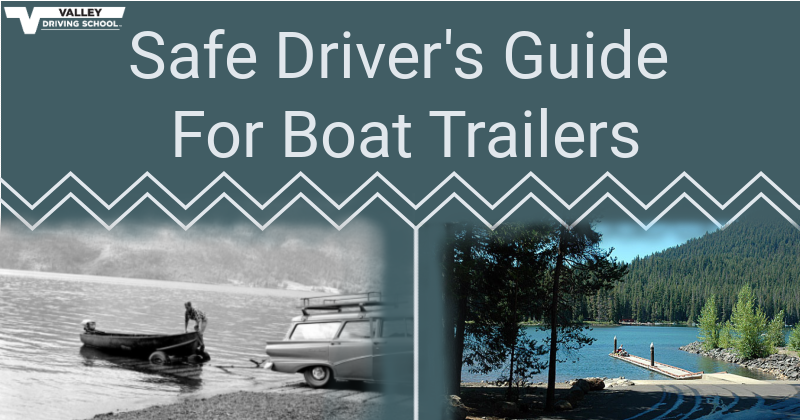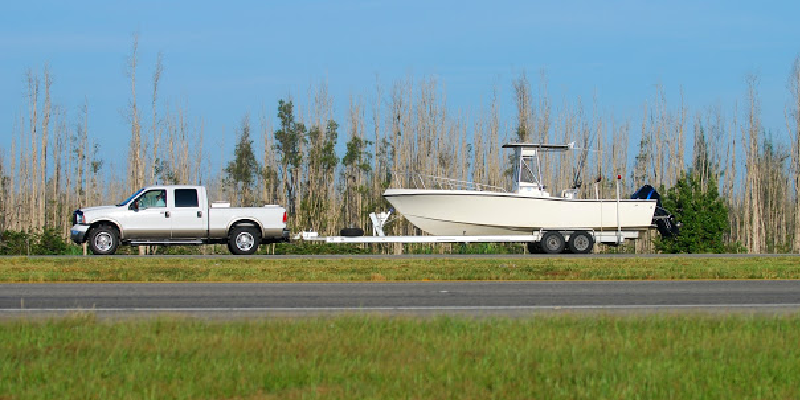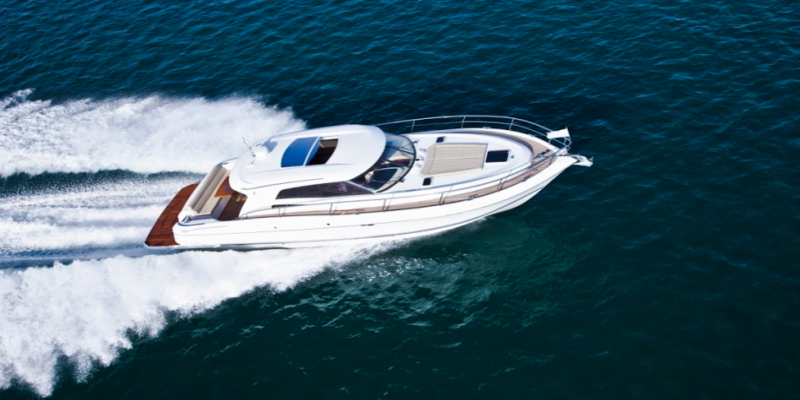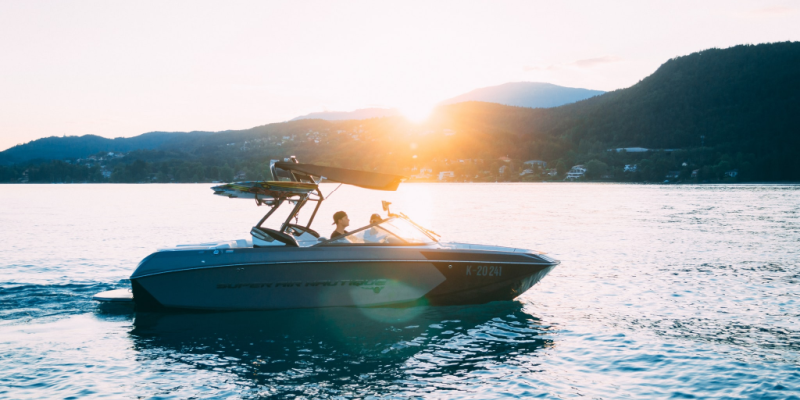As the summer winds down, it’s a great time to get a deal on a boat. It’s also the perfect time to practice your boat-trailer towing and launching skills before you head out on to the lake for the first time next year. Towing a boat is a breeze as long as you adhere to safety regulations and know some basics of trailer hauling. You’ll also want to make sure you take a boater’s exam before you go out on the water.

This week, right before summer ends, we’re sharing our top tips for boat trailer towing, hitching, and launching!
1. Hitching your boat
First things first, make sure your vehicle is adequately equipped with the towing capacity for your boat, also known as the Gross Axle Weight Rating. You’ll be able to locate this in the owner’s manual of your vehicle, and the weight of the boat will be on the capacity plate fastened to the boat.
Be careful not to get too close to the maximum - over-exerting your vehicle on difficult roads can cause damage and be unsafe. The safe rule of thumb is that you remain at 75-80% of your vehicle’s towing capacity or less.

Make sure that the coupler on the trailer matches your ball hitch and the locking mechanism is in good repair. Check your trailer classification against your hitch and make sure it matches. Ensure that your trailer and vehicle lights are all in working order by testing the brakes and signals while still parked. Double-check that any tie down straps, typically on the back underside of the boat and trailer, are securely fastened.
IMPORTANT TIP: Most boat trailers can be towed with your regular class 5 car licence, but make sure that the trailer you’re towing doesn’t exceed 4600 kg or you may need to add the code 20 endorsement to your licence.
2. Towing your boat
Say goodbye to any hairpin turns or precision handling - slow, steady, and wide is now the way to go. Be especially careful while turning as the boat will swing into the path of your turn. Give adequate space and use your mirrors to ensure you’re not going to hit anything with your vehicle or boat, especially in tight residential areas or intersections.

Accelerate gently from a stop - your vehicle is working extra hard and will thank you for the extra time to get up to speed. Always keep an eye on your boat and trailer to ensure nothing has come loose or could be in danger of flying off and striking another vehicle, such as your boat cover, straps, or items inside the boat. Be cautious and take it slow on uneven terrain or driveway dips so you can avoid bottoming out your hitch, or striking it on the ground, which can cause damage.
3. Launching your boat
When you arrive at the boat launch, be sure to pull off into a safe area where you are not obstructing traffic. Once you have found a safe place, you can take off any covers and rear tie-down straps. Leave your hitch and winch crank on your trailer securely fastened though, and ensure the trim is up.
IMPORTANT TIP: Be sure to screw in the drain plug. Without this, your boat will take on water while you’re trying to enjoy yourself!

Once the launch is clear, back up your boat trailer slowly. If you begin to jackknife, stop, take a breath, pull forward, and begin again. Remember that when backing a trailer, turning your wheel to the left, the back of the trailer will move right, and vice versa. Slow and steady wins the race!
Back up until your trailer tires are submerged and the intake holes on the hull of the boat are submerged. Put your vehicle in park, ensure your boat driver is ready, then release the winch, unclip the line, and gently push the boat straight back off your trailer.
4. Loading your boat
Once you’re done on the lake, drop your trailer driver off on shore and clear the boat launch as you wait for your turn. The trailer driver should return the trailer to the same position as launching, but with at least three-quarters of the bunkers submerged.
As you navigate the boat towards the trailer, ensure you slowly raise the trim as the water becomes more shallow. Slowly drive your boat straight toward the trailer. Once you are within a few feet, cut the engine and raise the trim completely as your boat glides on to the trailer. Ensure the boat is sitting evenly.
Re-attach the winch, crank the boat up to an adequate position, and lock the winch before pulling the boat out of the water. Before off-loading any equipment and re-attaching your additional tie-down straps, move out of the way of the launch. Re-check your trailer light functions and secure all straps and covers, and you’re done!
--
As summer winds down and BC gets chilly, there’s no time like now to try and fit in a couple more boating trips. If you have enough time to fit in a boating road trip, check out our 5 Road Trips for a Beautiful BC Autumn and tow the boat along for a final hurrah!
